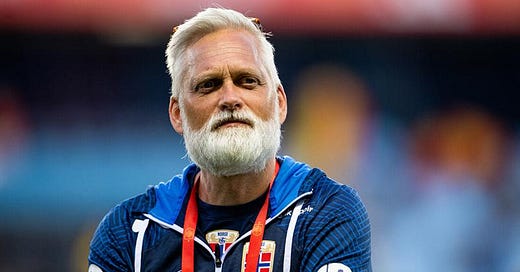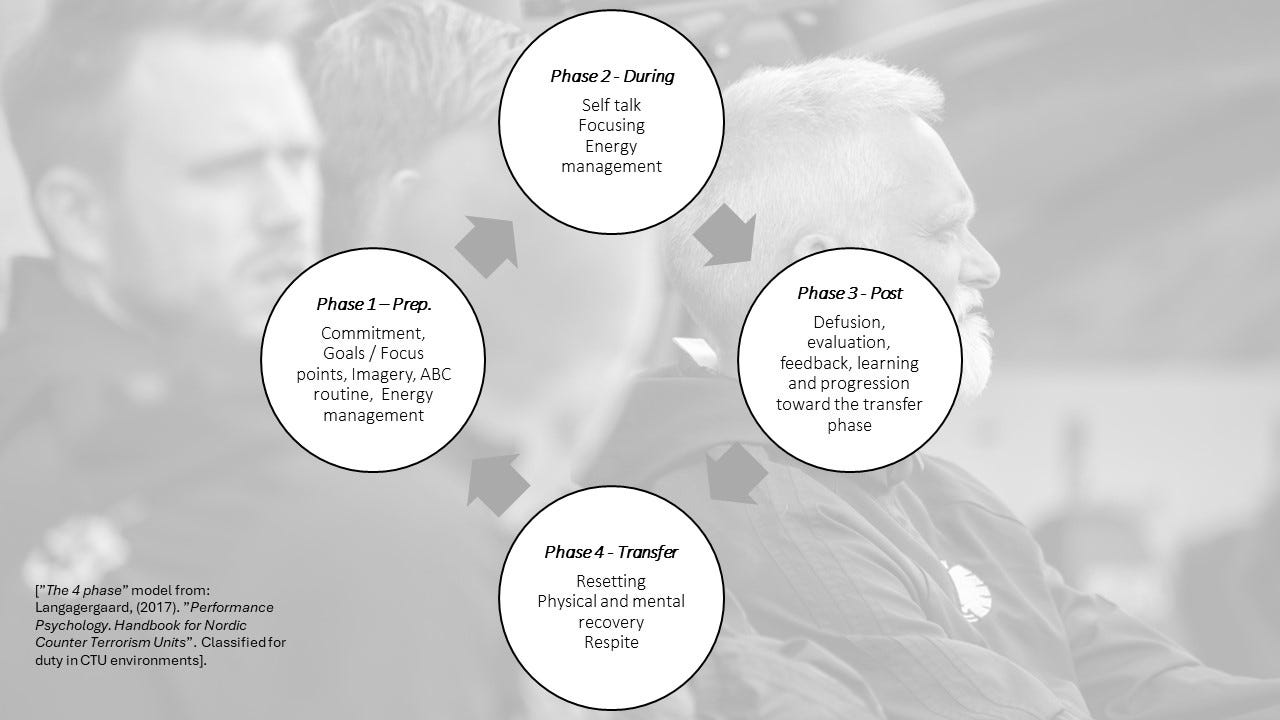22 July 2011. A date etched into Norwegian history. Facts do little to paint a picture of the horror which engulfed Oslo and the island of Utoya on that fateful day, but they offer some sense of the scale of the tragedy.
77 people lost their lives in two terrorist attacks, carried out by neo-Nazi Andres Breivik. It remains the worst violence Norway has seen since the Second World War.
In the aftermath of the atrocity, attention fell on the response of Norwegian police. Criticised for focusing too zealously on the bombing in Oslo - hampering efforts to react to the mass shooting in Utoya two hours later - emergency services began the tough task of looking for lessons to learn.
During this period of reflection, Martin Langagergaard's phone rang. The Danish performance psychology consultant had worked with personnel from the Norwegian Counter Terrorism Unit (CTU), who were part of the emergency forces’ response to the ‘22/7’ atrocity, since 2009.
“They said, ‘You know us, but you’re not part of us and we have to talk about how we move on”, recalls Langagergaard, who now works with Norway’s national football team.
“If you get beaten like they did, if you make mistakes like that - and they made some mistakes, as other people made mistakes also - you have to remember you did a lot of good things…and then work out, ‘How do we proceed from here?’”
The CTU's appetite for change was matched by Langagergaard’s enthusiasm for his new brief: help reinvent the performance culture of an organisation still reeling from Breivik’s rampage.
Over the following four years, Langagergaard developed what is now known in counter-terrorism circles as the ‘four phase’ model (colloquially referred to as the ‘Langa model’), creating what he describes as a ‘common language’ for CTU personnel to discuss their state of mind.
The approach, which is rooted in the concept of ‘shared mental models’ increasingly deployed by sports teams, provided a framework for CTU members to follow both in and away from hostile environments.
The phases straddle preparation for a task, execution, evaluation and what Langagergaard labels a ‘transfer’ period, allowing reflection away from an operation. Phases can stretch from days to, in the case of a golf swing, seconds: a tee shot could theoretically see a player move through phases 1, 2 and 3.
The approach allows organisations of any kind – from counter-terrorism units to football clubs – to analyse events through a psychological lens.
“A team leader can go to his five or six guys and say, ‘Okay, let's go through today’s tactical training and look at the psychological part: how was your phase one? How did it go in phase two? How was phase three?’, and they can start sharing how they see other people in the team,” explains the former Aalborg BK and Rosenborg BK backroom team member.
“They get a legitimate common language so they can talk openly about things like how difficult it is to switch off sometimes.”
The Mind Room is a reader-supported publication. To receive new posts and support my work, consider becoming a free or paid subscriber.
The model is now a firmly established part of Nordic CTUs’ modus operandi, with counter-terrorism forces in Langagergaard’s home country – as well as Sweden, Finland and Iceland – using the phases to inform their work.
According to Langagergaard, the reason for the model’s widespread adoption is twofold. Firstly, it provides a simple way of going beyond traditional mantras such as ‘fail to prepare, prepare to fail’, with research showing that high-quality delivery of phases 1,3 and 4 (preparation, evaluation and transfer) will lead to a better phase 2 (performance).
Secondly, it provides theoretical confirmation for intuition not necessarily followed in high-pressure environments: if you want people to work with high intensity, you also need them to switch off. As Langagergaard puts it: “Short-term, it enables you to get ready to go again and long-term, it supports sustainable human performance and mental health, from a career perspective”.
The points will be familiar to football fans, with clubs continuing to explore ways of creating ‘marginal gains’ and players facing increasingly congested fixture lists. It’s perhaps one of the reasons why FC Copenhagen turned to Langagergaard in 2018, as they attempted to qualify for the Champions League.
Entrusted with tasks such as leading post-match debriefs – traditionally the domain of coaching staff – Langagergaard worked closely with head coach Ståle Solbakken, who was a fan of the ‘four phase’ model.
“The four phases kind of became a common reference, which he started using (when talking to the players), saying ‘Remember the phases, remember the tools in phase three’,” recalls Langagergaard.
In 2020, Langagergaard swapped Denmark for Norway, moving from Copenhagen to Norwegian Premier League club Rosenborg. During a two-year spell with the team, he again deployed the model, building a reputation that would eventually bring him to the attention of the country’s national side in the autumn of 2022.
Since then, Langagergaard has been part of a backroom team setup that is focused on ending what he refers to as the ‘national trauma’ caused by Norway’s 24-year failure to qualify for a major tournament.
The Dane’s focus has been centred on helping the team to gel in the limited amount of time national squads spend together. With Norway’s players only collectively assembled for approximately 50 days a year, he has to focus on practical ways of implementing the four phases.
“When we go into Phase 1 it’s important we connect, so we've created what I refer to as MVPs, which is a bit like a buddy (system),” explains Langagergaard.
“You need someone in the locker room who, if you're very nervous or if you’re a bit too high or a bit too low, can cover you, because we don’t want anyone to feel alone.”
The integration of the four phases extends to Norway’s leadership group of seven senior players, who consciously schedule meetings during Phase 1 (two days before a game) and Phase 3 (two days after a game).
With Norway facing a long wait before their next brush with a major tournament – the side’s failure to make it to Euro 2024 means their next competitive fixtures are World Cup 2026 qualifiers – Langagergaard has some time to further ingrain his ideas. With players such as Erling Haaland and Martin Odegaard part of the squad, and more World Cup qualification spots open than ever before, you suspect Langagergaard could well be taking the four phases to America in two years’ time.
The Mind Room is a reader-supported publication. To receive new posts and support my work, consider becoming a free or paid subscriber.
Questions?
If you have any queries about the newsletter, get in touch by emailing mindroomenquiries@gmail.com.
Previous articles
New subscriber or looking for access to the back catalogue of Mind Room articles? You can access all of the stories, covering everything from AC Milan’s neuroscience lab to the way English rugby teams are embracing ‘shared mental models’, by becoming a Mind Room Member and gaining access to the four sections of the site:
Thanks again for reading The Mind Room!





Super interesting! Lots of new players, even amateurs talk about stress going on the field and playing. Stress of losing, playing bad pass etc. Those kind of articles are opening up doors not only to manage teams but even amateurs.